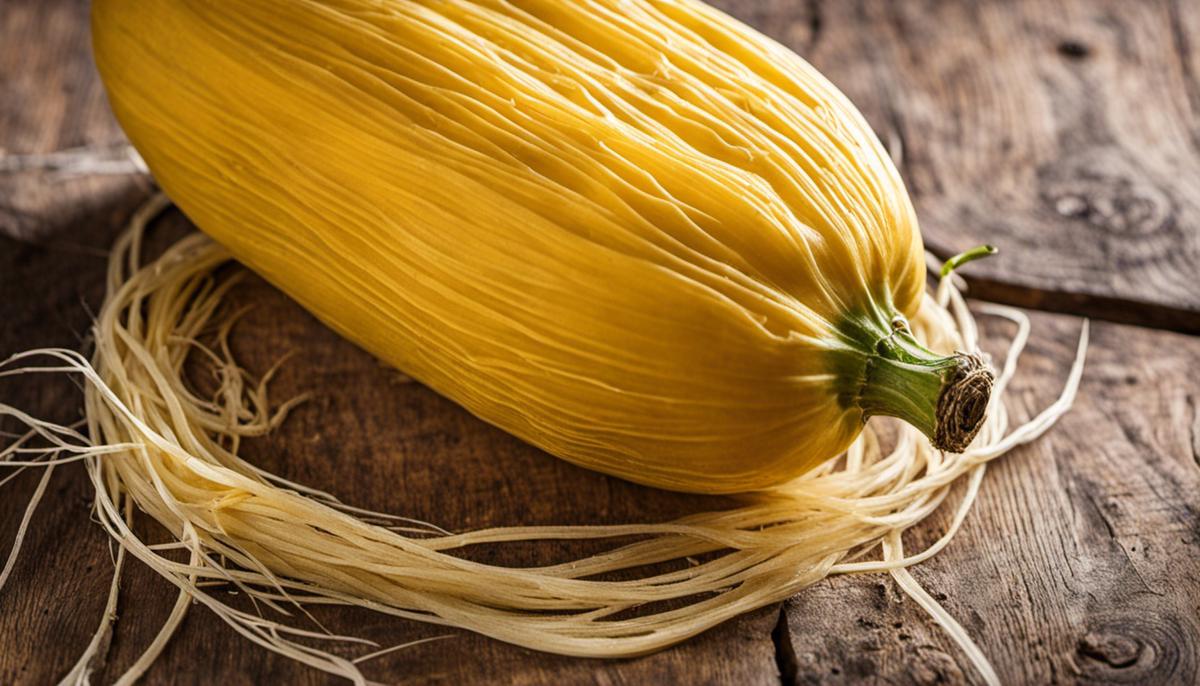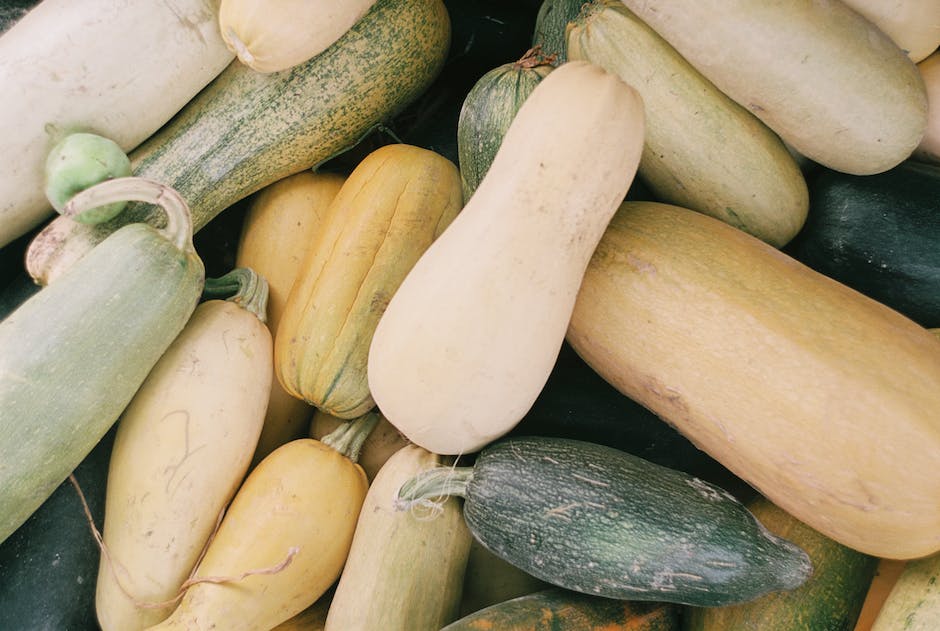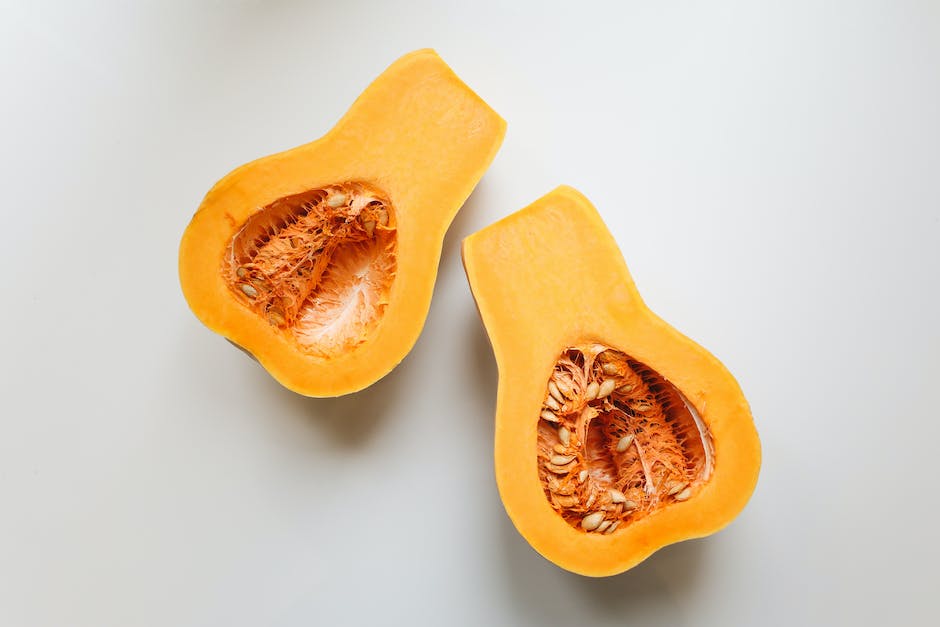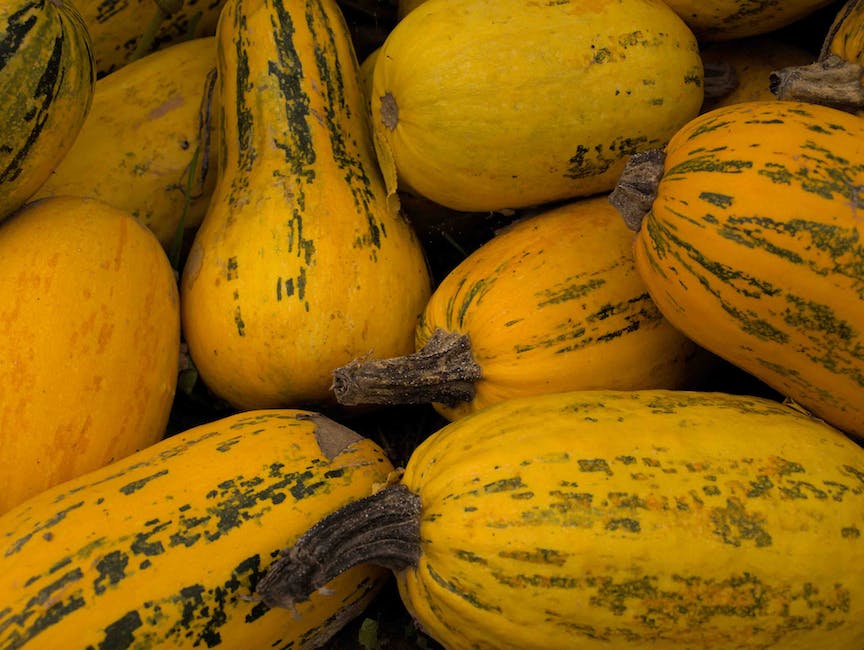Identifying a Perfectly Ripe Spaghetti Squash

Finding the perfectly ripe spaghetti squash can be a challenge if you’re new to the squash family. Yet, it’s well worth learning the subtle signs that differentiate a mature one from its less ripe counterparts. This intriguing vegetable, with its spaghetti-like interior, provides a wonderful gluten-free alternative to traditional pastas, bringing both nutrition and novelty to your dining table. In this informative piece, we’ll navigate through the physical signs of a ripe spaghetti squash, including its color, heft, and surface texture. We’ll also discuss practical methods like the ‘fingernail test’ to further validate its ripeness. Finally, we’ll talk about how to adequately store and utilize this versatile veggie in your culinary adventures.
Physical Signs of a Ripe Spaghetti Squash
Your Guide to Selecting Perfectly Ripe Spaghetti Squash
Culinary enthusiasts know well that the heart of a delicious meal starts with fresh, ripe ingredients. For those who are fond of featuring versatile winter vegetables in their dishes, the spaghetti squash is highly favored. Just as the name suggests, the flesh of this unique squash separates into spaghetti-like strands, making it a great alternative for dishes that usually feature noodles.
Selecting a perfectly ripe spaghetti squash may seem complex, but it doesn’t have to be. The joy of cooking comes from the bustling local farmer’s market, the sensual aroma of fresh vegetables, and the satisfaction of knowing you have chosen the right produce for your dish. Here are the key physical signs to look for when shopping for a ripe spaghetti squash.
- First and foremost, it’s all about the color. The outer shell of a ripe spaghetti squash should be a deep golden yellow, a hue that screams “ready for the oven”! Dull or green color usually indicates that the squash is either unripe or was harvested too early.
- The shell’s integrity is as significant as its color, too. It should feel exceptionally hard and firm—so much so that pricking it with a fingernail won’t leave a dent or mark. A soft, easily pierced surface often suggests that the fruit is overripe and its interior may have started to decay.
- Size does matter, at least when selecting a ripe spaghetti squash. Typical ripe squash weighs between 2 and 3 pounds. While size can vary, the rule of thumb is if the squash is too light for its size, it’s unripe; if it’s too heavy, it may be overripe. Finding that delicate balance is the key.
- Last but not least, a simple shake of the squash can also hint toward its ripeness. Rattling seeds inside are a telltale sign that the spaghetti squash is overripe. In ripe squash, the seeds are firmly attached to the flesh and don’t make a sound when shaken.
Remember, selecting ripe fruits and vegetables is both an art and a science. So, on that next trip to the grocery store or the local farmer’s market, use these tips as the secret weapon in this culinary adventure. Happy cooking!

Testing Spaghetti Squash for Ripeness
The Great Spaghetti Squash Extravaganza: When Flavor, Texture, and Fun Collide in the Kitchen
Every kitchen is an incredible playground for the adventurous foodie. One of the most delightful players is the humble spaghetti squash. Its texture unfurls in a delightful tangle, not unlike desirable al dente pasta. Its unique taste is equal parts sweet and nutty, an innovative base for enhancing a multitude of flavors.
Spaghetti squash, often lauded for its flexibility in dishes, turns ordinary meals into exciting gastronomic experiences. But selecting a ripe, ready-for-the-pot spaghetti squash requires an understanding of its characteristics.
While it was previously mentioned that color plays a major role, it’s also the intricacies of the hue you need to pay attention to. Go for squash boasting a consistent rich golden-yellow color. A green tinge or dark spots often indicate under-ripeness or damage, respectively.
The shell’s hardness is essential; a ripe spaghetti squash should feel solid throughout, with undeniably tough skin. Soft spots or cracks are a no-go, indicating a less than fresh fruit or the start of decay. So tuck those discerning fingers away from squeezing and focus on an overall sturdy feel.
A well-balanced squash is the ticket to your best dish yet. While the ideal weight and size of the squash were alluded to previously, checking for proportionate size to weight is crucial. An excessively light squash might be under-ripe, while a too-heavy one could be chock-full of undesirable seeds.
As we’re on the subject of seeds, you may have wondered about the shake test. Spaghetti squash seeds are generally secure, so if a squish result in a maraca-like sound, it may not be your best bet. You’re out for dinner material, not for a band audition.
Come to think of it, wouldn’t it be a pity if we could go to such great lengths to select the perfect spaghetti squash and not treat all produce the same way? Every fruit and vegetable in our kitchen deserves such scrutiny. Let’s savor the process of selecting, the joy of cooking, and the pleasure of eating, as these elements are fundamentally interwoven with our shared human experience.
Experiment with the spaghetti squash. Pair it with rich, hearty sauces, or let its natural flavor shine with just a dash of olive oil and herbs. Whether you’re a seasoned chef or a home cook looking for a new adventure, embracing the versatility of this delightful fruit (or is it a vegetable?) might just lead you to your next kitchen masterpiece.
In the pursuit of culinary excellence, remember one thing: the difference between good food and great food often begins in the market, not the kitchen. A ripe, nutrient-rich ingredient has the power to elevate a meal from ordinary to extraordinary. So, let’s honor our ingredients. And, most importantly, let’s keep having fun in this delicious, beautiful mess we call cooking.

Storage and Usage of Ripe Spaghetti Squash
Once the quest for the perfect spaghetti squash is accomplished, what next? How can you store ripe spaghetti squash, and how should you use it?
Storing a ripe spaghetti squash isn’t rocket science. In fact, it’s quite the opposite. Kept in a well-ventilated, cool area, away from direct sunlight, a whole spaghetti squash can last one to two months. Places like an open pantry, basement, or garage make ideal storage locations to prolong its shelf life.
While refrigeration might seem like a practical option, it may lead to shorter shelf life for ripe squash. This is because colder temperatures could cause it to rot due to condensation build-up. Hence, it’s best kept outside of your fridge.
When cut open, the story changes slightly. Leftover raw spaghetti squash should be kept in the refrigerator, ideally in an airtight container. This can keep it fresh for about a week. On the other hand, cooked spaghetti squash can be refrigerated for up to five days in an airtight container.
Freezing spaghetti squash is also a viable option. Cooked spaghetti squash strands freeze well. Pack the strands into an airtight container, leaving a bit of head space for expansion. Rest in your freezer knowing your beloved spaghetti squash is safely tucked away for up to eight months.
Now that we have the storage sorted, it’s time to whip up those culinary delights! Imagine vibrant bowls of spaghetti squash strands tossed in herbs and olive oil, or baked with cheese and mushrooms, or perhaps a hearty spaghetti squash casserole. What’s more, ripe spaghetti squash is a healthful powerhouse – low on calories but packed with fiber, vitamin A, and vitamin C.
Cooking spaghetti squash is simple and offers a plethora of methods – from roasting in the oven, to steaming in the pressure cooker, or even microwaving in minutes! Start by carefully cutting it in half lengthwise. Don’t forget to scoop out the seeds, which can be kept aside for roasting separately, a delightful and crunchy bonus snack!
Once cooked, scrape the squash with a fork and voila! You have a plate full of frosty spaghetti-like strands, ready to play the base of your next delicious meal. Why not use the scooped-out shell as a fun serving ‘dish’ for an added funky presentation?
No bounding to traditional pastas here, folks! Spaghetti squash’s mildly sweet and nutty flavor opens a whole new dimension where the culinary imagination can run wild. So whether it’s an adventurous Thai-spiced spaghetti squash, a comforting BBQ chicken spaghetti squash boat, or even a tempting spaghetti squash chow mein, never shy away from experimenting and creating your unique, delicious masterpiece.
At the end of the day, successful and enjoyable cooking boils down to two things: an adventurous palate ready to explore new flavors and quality ingredients. Armed with a ripe spaghetti squash and the right technique, any culinary dream can become a delectable reality. Bon appétit!

Spaghetti squash is a versatile, nutritious vegetable that can add a unique spin to your meals. Its ripeness is an important factor influencing not just the taste but also the texture and nutritional quality it brings to your plate. The signs of a well-ripened spaghetti squash such as a bright yellow skin, its resistance to finger pressure, and its weight relative to its size are key to selecting the right one. Follow these guiding tips to ensure you bring home the best spaghetti squash from your market visits. Once you’ve mastered the art of picking a ripe spaghetti squash, the possibilities of creating hearty, wholesome, and innovative dishes are boundless!



